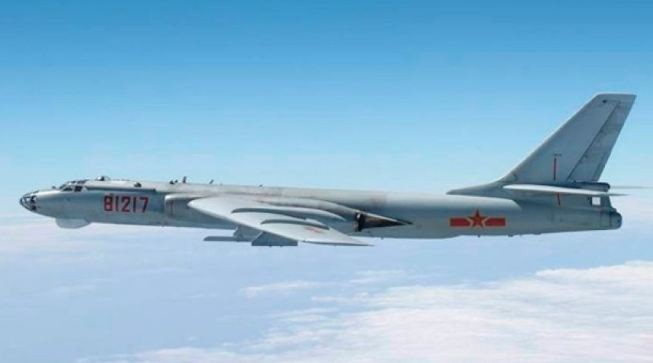Persistent propaganda patrols intended to highlight Chinese airpower close to the airspace of South Korea and Japan by Chinese warplanes increase the risk of an air battle accidentally taking place that might trigger a wider conflict.
The People's Liberation Army (PLA), the armed forces of the Communist Party of China, however, disputes this assertion, saying both countries will get used to these patrols that are set to increase in number in the future.
The air patrols, which have taken place with increasing frequency since 2016, involve long-range sorties by warplanes of the People's Liberation Army Navy (PLAN) or the People's Liberation Army Air Force (PLAAF), patrolling individually or in mixed formations.
China has frequently said these patrols prove its ability to penetrate the symbolic First Island Chain and patrol inside the waters of the Western Pacific controlled by the U.S. Navy.
During a PLAAF patrol on Dec. 10, 2016, Mitsubishi F-15J fighters of the Japan Air Self-Defense Force (JASDF) fired flares to warn the Chinese they were dangerously close to violating sovereign Japanese airspace. The Chinese responded by accusing the Japanese of firing "jamming shells," which is a vague phrase referring to no particular weapon.
China's Defense Ministry lodged a "solemn representation" with Japan over the JASDF's interference of the PLAAF's "routine training in the Western Pacific."
Now, China again asserts flights by Chinese bombers in the air zone close to South Korean and Japanese airspace are related to "routine training and not targeted at any specific country, and Japan's reaction to the flights was unnecessary."
"The Chinese naval air force on Monday (Jan. 9) conducted a surface-aircraft synergetic drill with Chinese Navy's warships in the area (the Sea of Japan and the East China Sea," said PLAN.
"The drill is an annual routine military training, is not aimed at any specific country, region or target, is in accordance with international law and practice, and will continue to be held in future."
Japan again sent JASDF fighters to monitor this flight of six PLAAF warplanes its radars detected flying over the East China Sea and Sea of Japan. It said its radars detected 10 PLAAF aircraft, not six.
The Republic of Korea Air Force sent 10 of its F-15K and KF-16 fighter jets to keep an eye on the Chinese bomber formation. The former is the Korean version of the McDonnell-Douglas F-15 Strike Eagle multirole fighter while the latter is Korea's version of the General Dynamics F-16 Fighting Falcon air superiority fighter.
PLAAF said the patrol consisted of six Xian H-6 bombers, which represents the largest number of this type of bombers in a single patrol so far. PLAAF operates some 140 of these bombers, some of which are configured to attack enemy warships with medium-range missiles.
Even Chinese military observers noted the presence of a large number of H-6s in one patrol was unusual.
"Bombers are meant for attack and H-6 can carry medium-range missiles, so the training might be related to attacking large surface vessels, and that's why South Korea and Japan became nervous," said Li Jie, a naval expert.
"They will get used to it, because this kind of training will not stop but increase in future."



























